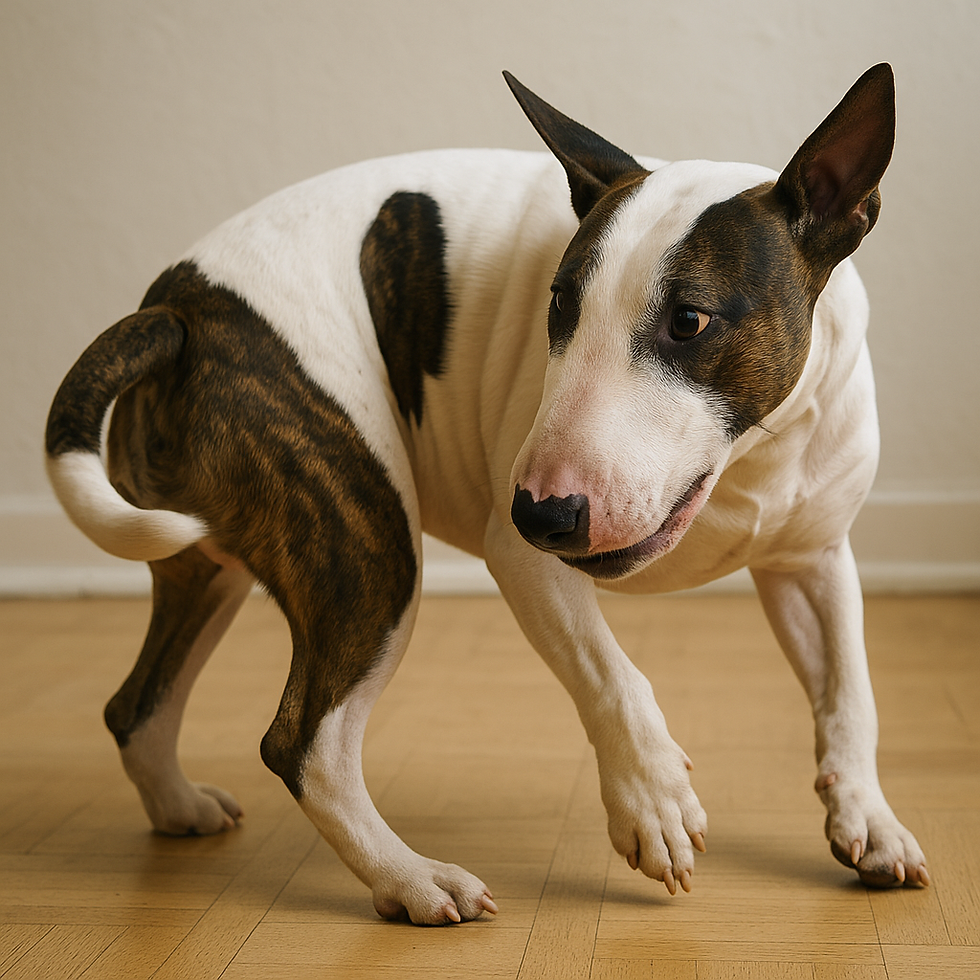Fear of Strangers in Dogs—What a New Study Found
- Oct 20
- 2 min read
Researchers studied 124 Great Danes (Finland) and found a DNA “hot spot” on chromosome 11 linked to dogs who are more fearful of unfamiliar people. They used a validated owner survey to score each dog’s “stranger-fear” on a scale (controls scored 0; cases scored >0). They also calculated a socialization score based on experiences from 7 weeks to 3 months of age, because early exposure strongly shapes confidence. Even after accounting for socialization, the genetic signal on chromosome 11 was still there.
They haven’t pinned down a single “fear gene,” but the region includes brain-related genes involved in stress and emotion—most notably the MAPK/JNK pathway (e.g., MAPK9/JNK2). Bottom line: fearfulness can have a biological component. It isn’t just training or “personality.”
What exactly did the scientists do?
Breed & sample: 124 Great Danes; each dog scored with a validated behavior questionnaire for stranger-directed fear.
Scoring details:
Stranger-Fear Score (SFS): 0–48 scale; controls had SFS=0 (confident greetings), cases had SFS>0 (mild to severe fear). Avoidance behaviors were weighted more heavily because they’re easy for owners to recognize.
Socialization Score (SS): 0–35 scale tallying puppyhood social experiences (7 wks–3 mos). SS was used as a covariate in the genetics to separate environment from genes.
Genetics: A genome-wide association study (GWAS) with ~173,000 SNPs (Illumina CanineHD). They tested models with and without the socialization covariate and controlled for population structure.
Sequencing for follow-up:
Whole-exome sequencing (WES): 8 fearful vs 8 non-fearful Danes.
Whole-genome sequencing (WGS): 4 fearful vs 2 non-fearful Danes.These were used to search the associated region for plausible DNA changes.
What did they find?
A significant locus on chromosome 11. The strongest marker (SNP) was near the 0.4–3.2 Mb region (best hit around 430,548 bp). Another, weaker signal appeared near 12.8 Mb.
In the top region, cases and controls showed “opposite homozygosity” patterns—suggesting different, consistent DNA blocks in fearful vs. non-fearful dogs.
Candidate genes in this area include:
MAPK9/JNK2 (linked to stress responses, learning, and anxiety pathways in the brain)
N4BP3 (implicated in neural development)
RACK1/GNB2L1 (involved in neural development/signaling)
A sorting nexin gene (SNX24) near the 12.8 Mb signal (endosomal sorting/signaling)
Important nuance: Despite strong regional signals, no single causal variant was confirmed. That fits what we know—behavior is complex and polygenic (many genes, small effects), and can vary by breed.
What they didn’t find (yet)
The team tested several promising variants (including in MAPK9 and N4BP3) in a larger set of Danes, but none alone explained fear of strangers. This doesn’t negate genetics; it simply means the trait likely involves multiple small variants plus environment.
Important context: breeders & biology
Reputable breeders work hard to produce healthy, well-socialized puppies—thoughtful pairings, early enrichment/social exposure, careful placements, and ongoing support.
Temperament is polygenic (influenced by many genes) and heavily shaped by environment. Early experiences, health, sleep, nutrition, stress, and day-to-day handling all interact with genetics as a puppy matures.
What this means for guardians
Your dog isn’t being difficult. Fear is a stress response and may be partly wired—compassion first.
Genetics ≠ destiny. With the right plan, management, gradual exposure, and rewards, dogs can learn safer, calmer responses.
Early socialization matters. Positive, well-managed experiences in puppyhood reduce risk later on.
Progress is possible at any age. We focus on small wins, predictable routines, and step-by-step training.
Source: Sarviaho et al., “A novel genomic region on chromosome 11 associated with fearfulness in dogs,” Translational Psychiatry (2020).





Comments